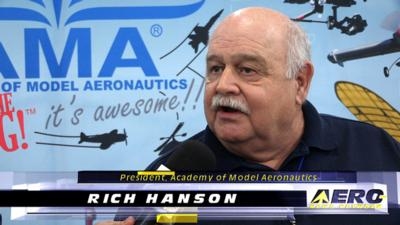Fri, Sep 21, 2018
Reiterates Support For Remote ID For Sophisticated Drones
The Academy of Model Aeronautics (AMA) has written letters to Congressional leaders in the U.S. House and Senate urging lawmakers to consider a risk-based approach to regulating recreational unmanned aircraft systems (UAS), as it works on a bill to reauthorize the Federal Aviation Administration (FAA). AMA also reiterated its support for remote identification and tracking for sophisticated drones.

In the letters, AMA president Rich Hanson outlined the importance of a risk-based regulatory approach to recreational UAS, which would ensure the safe integration of UAS into the nation’s airspace while continuing to allow responsible model aircraft operators to fly safely as they have for more than eight decades.
“Over the last several years, the FAA has adopted a risk-based approach to UAS regulation, with which we agree, and we believe it continues to serve the public interest,” Hanson wrote. “AMA stands ready to continue to work with policymakers on developing a regulatory system that increases safety and security of the aviation system without creating undue burdens on longtime, existing users of the airspace.”
Notably, a risk-based approach to regulating the manned aviation community has been successful for decades, and more recently has been used for commercial UAS operations. The letter also reiterated AMA’s support for remote identification and tracking at a certain threshold for UAS with advanced capabilities, such as sophisticated drones, but not model aircraft safely operating under the guidelines of a community-based organization (CBO).
“Policymakers have recognized that a one size fits all regulatory system has never been appropriate for aviation. The growing diversity of the UAS industry – from AMA’s weekend hobbyist operating line-of-sight to the advent of package delivery drones over crowded urban areas – precludes a single regulatory framework,” the letter stated. “AMA supports Congress giving the FAA the authority it needs to safely integrate new and complex UAS into the airspace, while maintaining the light regulatory touch that model aircraft hobbyists have operated under safely for decades.”
In conclusion, the letter affirmed AMA’s commitment to safety and notes the important role model aviation plays in developing new technologies and as an educational tool for science, technology, engineering and math (STEM) subjects.
(Source: AMA news release)
More News
Aero Linx: International Federation of Airworthiness (IFA) We aim to be the most internationally respected independent authority on the subject of Airworthiness. IFA uniquely combi>[...]
Ultrahigh Frequency (UHF) The frequency band between 300 and 3,000 MHz. The bank of radio frequencies used for military air/ground voice communications. In some instances this may >[...]
A Few Questions AND Answers To Help You Get MORE Out of ANN! 1) I forgot my password. How do I find it? 1) Easy... click here and give us your e-mail address--we'll send it to you >[...]
From 2019 (YouTube Edition): Learning To Paint Without Getting Any On Your Hands PPG's Aerospace Coatings Academy is a tool designed to teach everything one needs to know about all>[...]
Also: Sustainable Aircraft Test Put Aside, More Falcon 9 Ops, Wyoming ANG Rescue, Oreo Cookie Into Orbit Joby Aviation has reason to celebrate, recently completing its first full t>[...]
 ANN's Daily Aero-Linx (05.06.25)
ANN's Daily Aero-Linx (05.06.25) ANN's Daily Aero-Term (05.06.25): Ultrahigh Frequency (UHF)
ANN's Daily Aero-Term (05.06.25): Ultrahigh Frequency (UHF) ANN FAQ: Q&A 101
ANN FAQ: Q&A 101 Classic Aero-TV: Virtual Reality Painting--PPG Leverages Technology for Training
Classic Aero-TV: Virtual Reality Painting--PPG Leverages Technology for Training Airborne 05.02.25: Joby Crewed Milestone, Diamond Club, Canadian Pilot Insurance
Airborne 05.02.25: Joby Crewed Milestone, Diamond Club, Canadian Pilot Insurance



